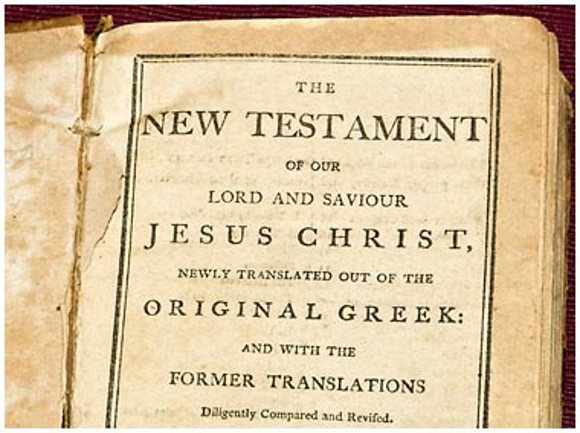 The New Testament is often referred to as “The Christian Bible” or “The Christian Scriptures.” This is a bit of a misnomer because the vast majority of Bibles that Christians own contain both the Old and New Testaments. Since the time of Christ, Christians have benefited from and been enriched by the Hebrew Scriptures as well as the New Testament.
The New Testament is often referred to as “The Christian Bible” or “The Christian Scriptures.” This is a bit of a misnomer because the vast majority of Bibles that Christians own contain both the Old and New Testaments. Since the time of Christ, Christians have benefited from and been enriched by the Hebrew Scriptures as well as the New Testament.
In fact, the Old Testament, or the Hebrew Scriptures, were the only Scriptures for the first years of the early Church. The New Testament was in the process of being written and it was not until around 367 AD that the list of books was formalized and the canon was closed. The list of “approved” New Testament books, though, had been floating around since early in the second century.
The New Testament can be broken down into several sections. The first four books are usually referred to as the “Gospels.” Each of these books, Matthew, Mark, Luke, and John is a presentation of the life of Christ. The Gospels appear to have been written to specific groups of Christians.
Mark is usually accepted to be the earliest of the four. John Mark was a close associate of Jesus’ disciples, especially Peter and Paul. Most scholars believe, and early Church tradition seems to bear out, that Mark’s Gospel is actually a compilation of Peter’s sermons about Jesus and his eye-witness recollections of Jesus’ ministry. Mark was likely written in Rome to the Christians there. This is where Peter spent his last days before being martyred for his faith.
Both Matthew and Luke’s Gospels draw heavily from Mark’s work. They both add material of their own but clearly make use of a large portion of Mark’s account. Matthew’s Gospel is aimed at Jewish Christians, probably in Palestine. He focuses on presenting Jesus as the fulfillment to many Old Testament prophecies. He also seems to portray Jesus as a new Moses. While Mark is more concerned with what Jesus did, Matthew is more interested in presenting what Jesus said.
Luke is kind enough to provide the reader with a methodology for how he wrote his book. Luke refers to other early Christian writings and says, “They used as their source material the reports circulating among us from the early disciples and other eyewitnesses of what God has done in fulfillment of his promises. Having carefully investigated all of these accounts from the beginning, I have decided to write a careful summary for you.” He speaks of the reports and eye-witness accounts that were circulating among the Christians. Luke then said that he had carefully investigated these accounts as he wrote his book.
Luke’s Gospel is the longest and probably the most chronological. As stated, he incorporates Mark’s Gospel, but also adds a lot of original material, probably gleaned from interviewing witnesses. Luke’s work appears to have been aimed at a sophisticated Greek audience. The Greek that he wrote in is, by far, the most cultured of the New Testament.
John’s Gospel is very different from the other three. It was probably written at least twenty years after the others, late in the first century. The Church Fathers believed that John wrote to supplement what had already been written about Jesus. John’s presentation of Jesus develops Christ’s character. John presents many long conversations that Jesus has with various individuals who were seeking to know the truth. John only provides seven miracles, but they are strategically chosen to reveal more of Christ’s divine nature.
John also articulated his reason for writing another account of Jesus’ life. “Jesus’ disciples saw him do many other miraculous signs besides the ones recorded in this book. But these are written so that you may believe that Jesus is the Messiah, the Son of God, and that by believing in him you will have life.” (John 20:30-31) John wanted his work to lead people to faith in Christ.
To be continued…
Would you like to be a part of what God is doing in South America? Annie and I are serving the Lord in Brazil. Click here to get involved. Obrigado!


